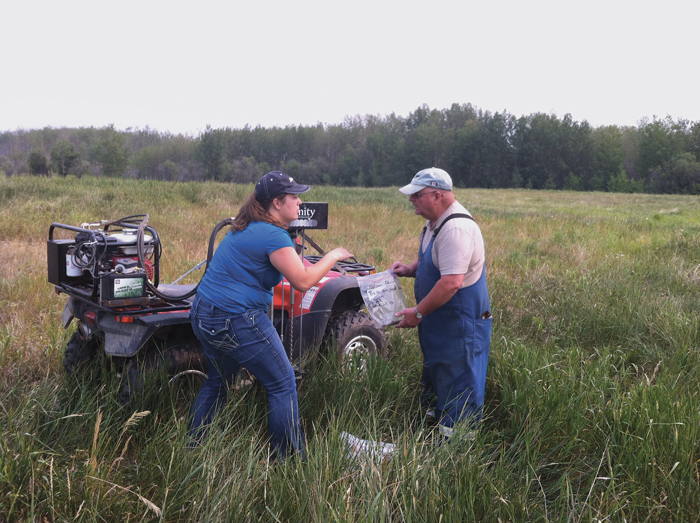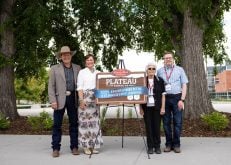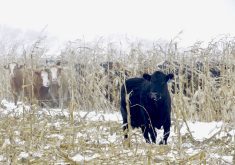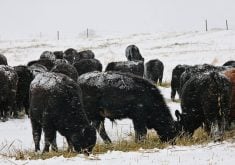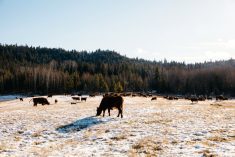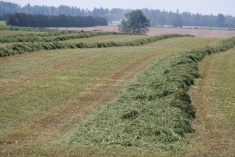Two up-and-coming grazing systems could help Alberta cattle producers combat drought.
In a three-year study conducted by the Peace Country Beef and Forage Association, researchers found bale-grazing and bale-processing sites improve organic matter in the soil and increase the soil’s water-holding capacity more than other types of grazing system.
“We’ve seen a lot of drought in the Peace Country the last few years, so we see these as really handy management tools that are definitely doable for producers in our area,” said Monika Benoit, manager of the association.
Bale grazing and bale processing are becoming increasingly popular, she added.
“They’re viewed as a low-cost production system, which is something that’s really important for cow-calf producers,” she said. “But people have lots of questions about them.”
That prompted the association to get some local data to answer some of those questions.
Benoit’s team compared different grazing management systems by taking soil samples, and measuring compaction, water infiltration, forage yield and quality, and field nutrients in each.
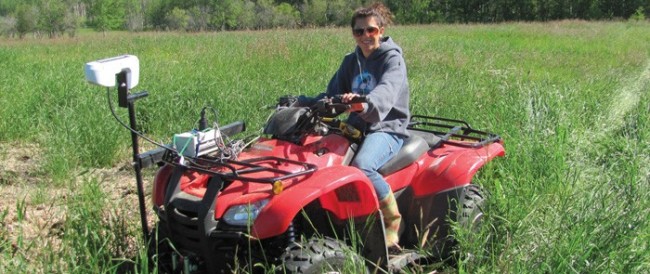
By and large, bale grazing and processing performed better than other types of grazing management systems — particularly when it came to improving organic matter in the soil.
“Every fraction of organic matter built increases the water-holding capacity of your land,” said Benoit.
Soil with two per cent organic matter will hold 32,000 gallons of water, or 21 per cent of a 5-1/2-inch rain, she said. If organic matter levels in the soil get up to eight per cent, the water-holding capacity jumps to 128,000 gallons of water, or 85 per cent of that same amount of rainfall.
“For bale processing, our average over the three years was 10.4 per cent organic matter, which is really good, and we had 10.8 per cent organic matter for bale grazing,” said Benoit.
Read Also
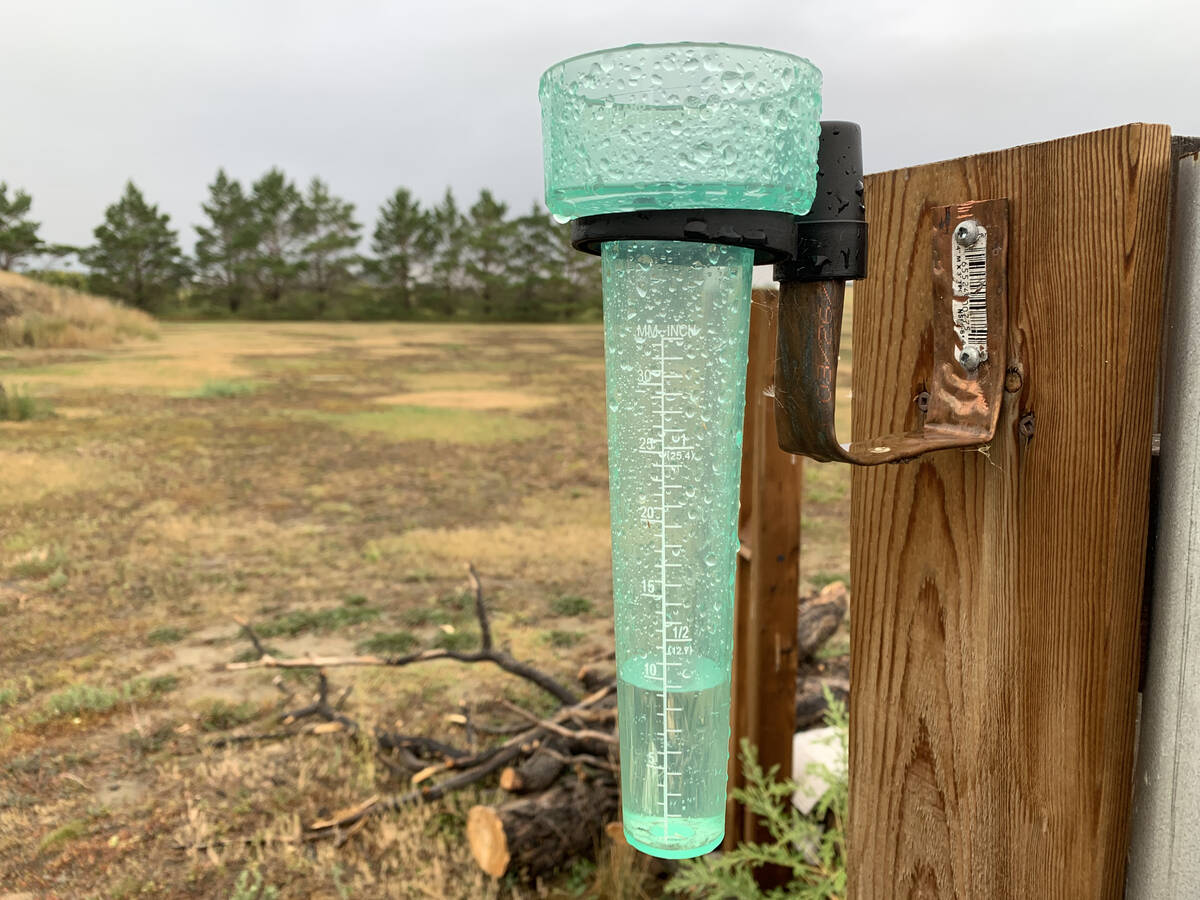
Western B.C., parts of Prairies received drought relief in October
Drought monitor for Western Canada for October
“In comparison, the winter feeding site was only 3.5 per cent and hay production was at 4.6 per cent. There’s really quite a significant difference.”
Water infiltration was also better at the bale-grazing and bale-processing sites.
“The bale-processing site came back at 14.3 inches per hour, and the bale grazing was at 13.1 inches per hour,” said Benoit. “Greater than 10 inches per hour is considered very rapid.”
The stockpiled grazing site saw comparable water infiltration rates, at 13.6 inches per hour, but the hayfield only saw rates of 9.3 inches per hour, and the pasture topped out at 5.5. inches per hour.
The wintering site performed worst of all.
“We thought, from the surface, that that would have showed better values, but it was only 2.3 inches per hour,” she said, adding the entire field was tilled in the fall of 2011. “That had a very detrimental effect on organic matter levels and infiltration.”
No matter what system producers choose, getting the feed tested is “a big thing,” said Benoit.
“Not every management system works on every farm,” she said. “If you have poor hay, it doesn’t matter how you’re feeding it, but if you have decent forage, they’re likely going to do better.”

